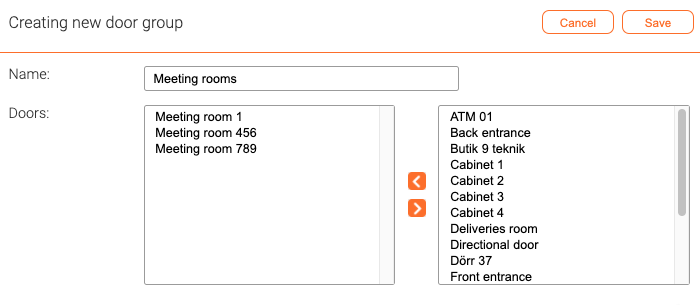Door groups: Difference between revisions
Jump to navigation
Jump to search
Telcredstaff (talk | contribs) No edit summary |
Telcredstaff (talk | contribs) No edit summary |
||
| (One intermediate revision by the same user not shown) | |||
| Line 1: | Line 1: | ||
''Door groups'' are exactly what they sound like - a flexible way to create groups of doors. The main purpose of door groups is to make it easy to create |
''Door groups'' are exactly what they sound like - a flexible way to create groups of doors. The main purpose of door groups is to make it easy to create privileges / access rights for a whole group of doors, without having to remember and include all the individual doors. For organizations with a large number of doors, creating well thought through door groups should make it much easier to assign correct access rights to users. |
||
[[File:Doorgroups.png|Door groups]] |
[[File:Doorgroups.png|border|Door groups]] |
||
Latest revision as of 16:13, 13 October 2021
Door groups are exactly what they sound like - a flexible way to create groups of doors. The main purpose of door groups is to make it easy to create privileges / access rights for a whole group of doors, without having to remember and include all the individual doors. For organizations with a large number of doors, creating well thought through door groups should make it much easier to assign correct access rights to users.
A door group can express any logical relation between the doors in the group, e.g. site, floor, type of room, security level, geographical area or something else. A door can be a member in many groups at the same time, e.g. site, type of room, and security level.
